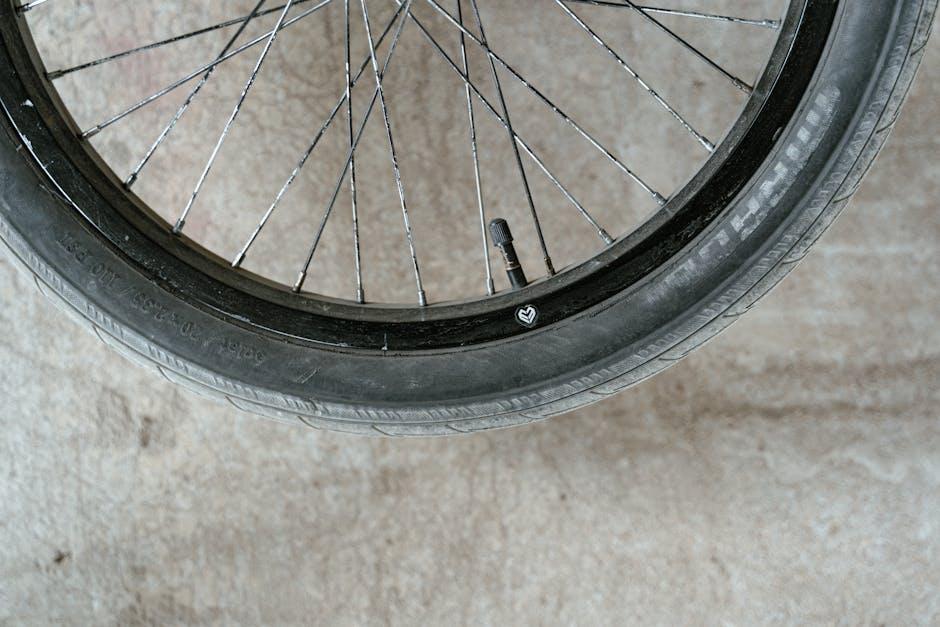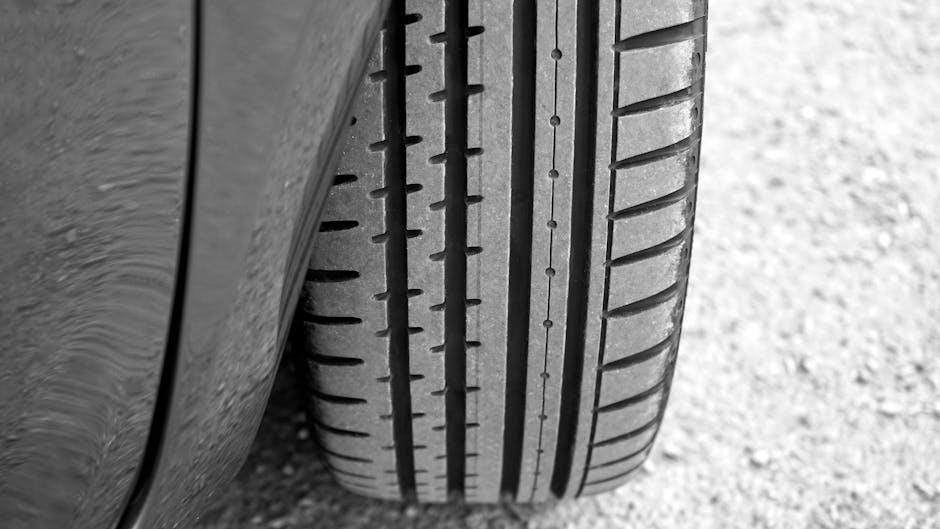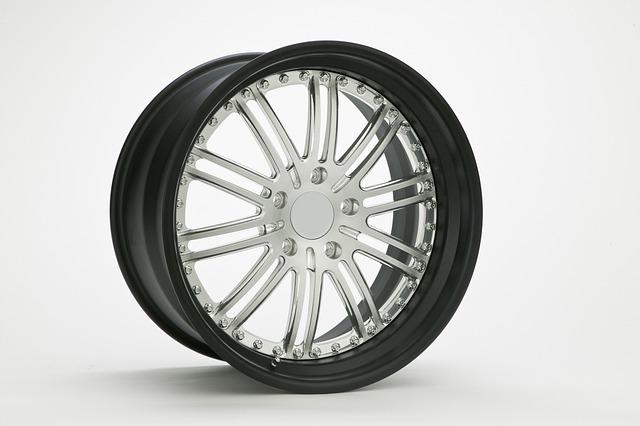Imagine the smooth, quiet hum of your car’s tires as they kiss the asphalt, a gentle rhythm that promises safety and comfort on every journey. Yet beneath this seamless motion lies a delicate dance of balance—an art and science essential to your vehicle’s performance and longevity. Tire balancing is often overlooked, but it plays a crucial role in ensuring that every turn is steady, every mile is economical, and every drive is a pleasure. In this article, we will explore the ins and outs of how to balance car tires, empowering you with the knowledge to maintain harmony between rubber and road. Whether you’re a seasoned gearhead or a curious driver, understanding tire balance can transform your ride into a smoother, safer experience.
Table of Contents
- Understanding the Importance of Tire Balancing for Vehicle Performance
- Identifying Signs That Your Car Tires Need Balancing
- Step-by-Step Guide to Balancing Tires at Home and in the Shop
- Choosing the Right Equipment and Tools for Tire Balancing
- Common Mistakes to Avoid When Balancing Your Car Tires
- Maintaining Balanced Tires for Long-Term Safety and Efficiency
- Q&A
- Wrapping Up

Understanding the Importance of Tire Balancing for Vehicle Performance
Tire balancing plays a crucial role in ensuring a smooth and safe driving experience, affecting much more than just comfort behind the wheel. When tires are not balanced correctly, uneven weight distribution causes vibrations that reverberate through the steering wheel, seats, and floorboard. This not only diminishes driving pleasure but also accelerates wear on suspension components and tires, leading to costly repairs and frequent replacements. Properly balanced tires help maintain optimum contact between the tire and road surface, enhancing traction and responsiveness, which is vital for both everyday driving and emergency maneuvers.
Beyond comfort and vehicle longevity, tire balancing also contributes significantly to fuel efficiency and environmental impact. Imbalanced tires force the engine to work harder to overcome the irregular motion, resulting in higher fuel consumption. Additionally, uneven tire wear caused by poor balancing increases the frequency of tire disposal, impacting the environment negatively. Consider the following key benefits of maintaining balanced tires:
- Improved handling and safety: Balanced tires ensure stability at high speeds and during turns.
- Extended tire and suspension life: Reduces premature wear and tear.
- Enhanced fuel economy: Less resistance means better mileage.
- Reduced vibration and noise: Creates a more comfortable ride.

Identifying Signs That Your Car Tires Need Balancing
When your tires are out of balance, your driving experience begins to feel different in subtle but unmistakable ways. One of the most common clues is a persistent vibration in the steering wheel or throughout the vehicle, especially noticeable at higher speeds. You might also observe uneven tire wear patterns, which often show up as cupping or scalloping on the tread surface. Additionally, handling may feel less precise—your car might pull slightly to one side or seem unstable when cruising down a straight road.
Below is a handy checklist of signs that hint it’s time to get your tires balanced:
- Steering wheel vibration during acceleration or at highway speeds
- Uneven or patchy tire wear visible upon inspection
- Increased road noise coming from the tires
- Poor fuel efficiency due to uneven rolling resistance
- Car pulling to one direction without steering input
| Symptom | What It Means | Recommended Action |
|---|---|---|
| Steering Wheel Shakes | Imbalanced front tires | Schedule tire balancing |
| Uneven Tire Wear | Possible wheel weight loss or alignment issues | Inspect and balance tires & check alignment |
| Noise & Vibration | Worn suspension or tire imbalance | Balance tires and inspect suspension |

Step-by-Step Guide to Balancing Tires at Home and in the Shop
Balancing tires at home can be a rewarding project with the right tools and patience. Start by removing your tire from the car and cleaning it thoroughly. Next, mount it on a balance stand or a simple DIY spinner. Slowly spin the tire and watch closely for the heaviest spot, which will naturally settle at the bottom. Mark this position with chalk or tape. To counterbalance, attach adhesive wheel weights directly opposite the marked heavy spot. Repeated spinning and adjustment will help ensure the tire sits evenly, significantly reducing vibrations and uneven tire wear.
When balancing tires in a professional shop, the process involves high-precision machines that spin the tire at higher speeds and precisely detect imbalance points. Typically, the technician will:
- Mount the tire and wheel assembly on a computerized balancer.
- Spin the tire to detect exact imbalance locations and weight requirements.
- Apply calibrated weights to both the inner and outer rim edges.
- Re-spin for confirmation, guaranteeing the smoothest possible ride.
| Step | DIY Balance | Shop Balance |
|---|---|---|
| Equipment | Manual spinner/stand | Computerized balancer |
| Precision | Moderate | High |
| Speed | Slow | Fast |
| Cost | Low | Moderate |

Choosing the Right Equipment and Tools for Tire Balancing
Achieving perfectly balanced tires starts with selecting the appropriate equipment tailored to your vehicle’s specific needs. A high-quality wheel balancer that offers both static and dynamic balancing capabilities is essential for accuracy and efficiency. For professional or frequent DIY use, consider machines that deliver digital readouts and self-calibration features, ensuring precise results every time. Additionally, investing in correct wheel weights—both clip-on and adhesive varieties—will help you fine-tune the balance for different rim types and driving conditions.
Beyond the balancer and weights, your toolkit should include accessories that foster smooth operation and enhance safety. Essential items like tire levers, valve stem tools, and a quality torque wrench will make mounting, adjusting, and securing tires easier and more reliable. Below is a quick comparison of common tire balancing tools that can guide your selection:
| Tool | Purpose | Best For |
|---|---|---|
| Digital Wheel Balancer | Precise weight distribution analysis | Professional & serious enthusiasts |
| Manual Bubble Balancer | Static balancing via bubble level | Budget-friendly, light use |
| Tire Weight Pliers | Installing clip-on weights securely | All users |

Common Mistakes to Avoid When Balancing Your Car Tires
When attempting to balance your car tires, a frequent pitfall is overlooking the importance of cleanliness. Dirt, brake dust, or road grime on the rim or tire can cause weights to shift or not adhere properly, leading to imbalanced wheels despite your efforts. Additionally, many DIYers neglect to check for bent rims or damaged tires prior to balancing, which can cause persistent vibrations that balancing alone cannot fix. Always perform a thorough inspection and clean both tire and rim surfaces before starting the balancing process to ensure accuracy and longevity.
Another common misstep is using incorrect or inconsistent weight placement. Placing wheel weights in the wrong position, or mixing different types of weights inconsistently, can upset the delicate equilibrium of your tires. Avoid relying solely on visual judgment; instead, use a proper balancing machine or a well-calibrated static balancer that helps identify precise weight locations. Remember these key points:
- Consistently use weights that are compatible with your wheel type and material.
- Place weights opposite the heavy spots indicated by the balancing tool.
- Secure weights properly to prevent detachment during driving.
| Common Mistake | Effect |
|---|---|
| Dirty rims | Weight slippage |
| Ignoring rim damage | Persistent vibration |
| Mismatched weights | Imbalanced wheel |
| Improper weight placement | Uneven tire wear |

Maintaining Balanced Tires for Long-Term Safety and Efficiency
Ensuring your tires remain balanced goes beyond just comfort—it’s a crucial step in preserving your vehicle’s overall performance and safety. When tires are properly balanced, they rotate evenly, reducing uneven wear and tear. This not only extends the life of your tires but also enhances fuel efficiency by minimizing unnecessary friction. Moreover, balanced tires play a significant role in maintaining smooth steering and reliable braking, especially during high-speed driving or sudden maneuvers.
Adopting a regular maintenance routine helps keep your tires in peak condition. Here are simple practices to incorporate:
- Periodic balancing checks: Typically every 5,000 to 6,000 miles, or when you notice vibrations.
- Rotate tires regularly: This promotes even tread wear across all tires.
- Inspect wheel weights: Ensure they haven’t dislodged or corroded, which can disrupt balance.
- Pay attention to driving habits: Avoid potholes and rough terrain which can throw off balance quickly.
| Maintenance Step | Recommended Frequency | Benefit |
|---|---|---|
| Balance Tires | Every 5,000–6,000 miles | Reduces vibration and tire wear |
| Rotate Tires | Every 6,000–8,000 miles | Promotes even tread wear |
| Inspect Wheel Weights | With every tire service | Maintains proper tire balance |
Q&A
Q&A: How to Balance Car Tires
Q1: Why is tire balancing important?
A1: Tire balancing ensures that the weight of the tire and wheel assembly is evenly distributed around the axle. This prevents vibrations, uneven tire wear, and improves overall driving comfort and safety.
Q2: How can I tell if my tires need balancing?
A2: Common signs include vibrations in the steering wheel or seat at certain speeds, uneven tread wear, and sometimes a noticeable wobble or noise while driving.
Q3: What happens if I don’t balance my tires?
A3: Unbalanced tires can cause premature tire wear, strain on suspension components, poorer fuel efficiency, and an uncomfortable driving experience due to vibrations.
Q4: How is tire balancing done?
A4: Technicians mount your tire on a balancing machine, spin it to detect heavy spots, and attach small weights to counterbalance those areas, ensuring smooth rotation.
Q5: Can I balance my tires myself?
A5: While it’s possible with the right equipment, tire balancing is typically best left to professionals who have the specialized machines needed for accurate balancing.
Q6: How often should tires be balanced?
A6: It’s recommended to balance tires every 5,000 to 7,500 miles, or whenever you rotate your tires and notice vibrations or uneven wear.
Q7: Does balancing include wheel alignment?
A7: No, balancing and alignment are different. Balancing corrects weight distribution on the tires; alignment adjusts the angles of the wheels to ensure they are set to the manufacturer’s specifications.
Q8: Can balancing fix all tire problems?
A8: Balancing fixes issues related to weight imbalance but won’t remedy problems caused by damaged tires, bent rims, or suspension faults.
Q9: Are tire weights safe for the environment?
A9: Traditional wheel weights may contain lead, which is harmful, but modern weights are often made from steel or zinc, which are more environmentally friendly.
Q10: What’s the bottom line on tire balancing?
A10: Regularly balancing your tires is a simple yet crucial maintenance step that keeps your ride smooth, your tires lasting longer, and your vehicle performing safely on the road.
Wrapping Up
Balancing your car tires may seem like a small step in vehicle maintenance, but it plays a crucial role in ensuring a smooth and safe ride. By taking the time to properly balance your tires, you not only extend their lifespan but also enhance your overall driving experience. Whether you choose to tackle this task yourself or visit a professional, understanding the process empowers you to make informed decisions for your car’s health. Remember, balanced tires are the steady rhythm in the symphony that is your journey on the road. Drive balanced, drive safe.

